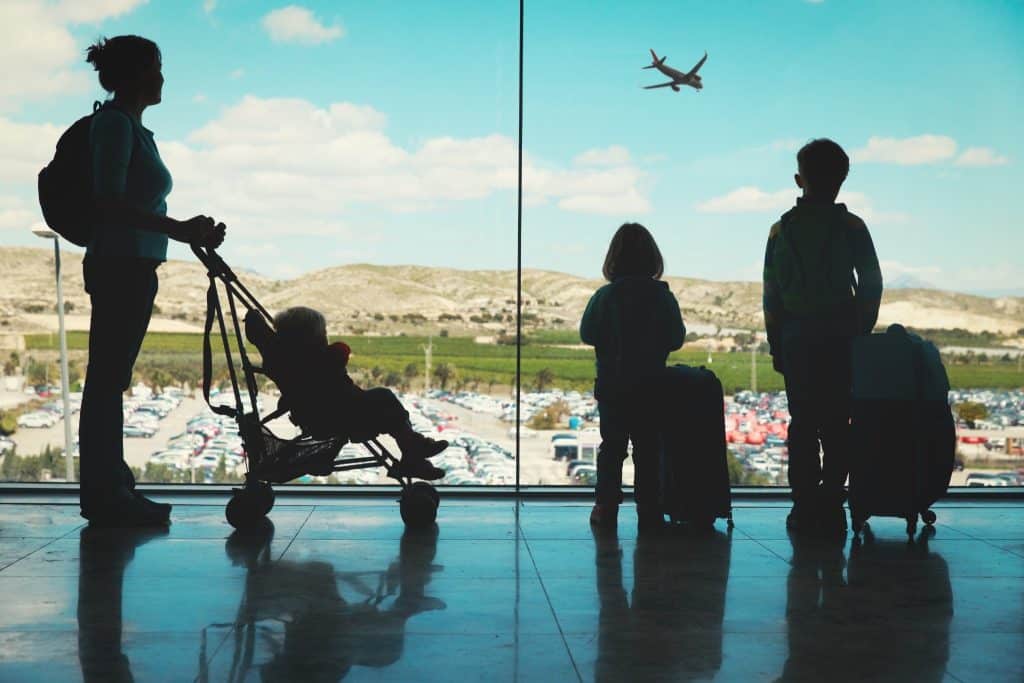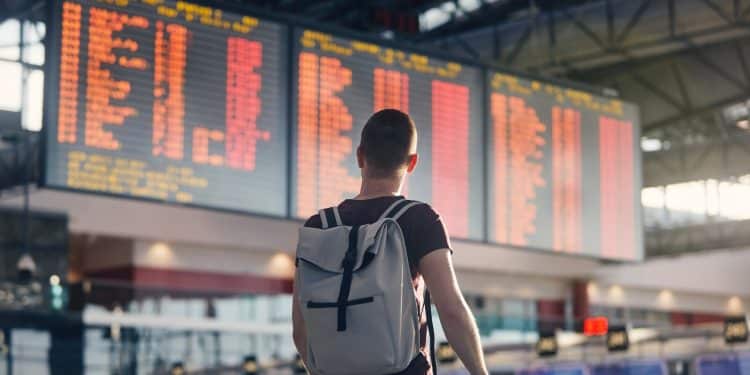You want more choice, lower fares, and routes that airlines do not sell on one ticket; that is where self transfer flights shine. You pick each leg yourself, stitch connections across airlines, and own the plan. Done right, self transfer flights reward you with flexibility and real savings. Done poorly, they bring missed legs, visa issues, and baggage headaches. This guide keeps it simple; you will learn what self transfer flights are, when to use them, and how to do them safely from search to touchdown. You control the layover; you pick the airport; you decide how much buffer to add. With a checklist and a backup, DIY connections can feel calm.
What exactly are self-transfer flights?
Self transfer flights are itineraries you build by booking separate tickets for connecting legs. The flights may be on different airlines; they may use different airports in the same city. Because each ticket is standalone, the second airline does not protect you if the first segment is delayed. That is the trade; self transfer flights give freedom, but they make you responsible for timing, luggage, and immigration. If you can plan with margin and follow a checklist, self transfer flights become a useful tool for complex routes and sold-out dates.

Why choose them; why avoid them
The upside is choice and price. Self transfer flights often unlock cheaper combos, open-jaw routes, and rare carriers you never see on one booking. You can fly into one city and out of another; you can stop for a day without change fees. The downside is risk. If a delay breaks your connection, you buy a new ticket. If your bags are not interlined, you must collect and recheck. When a visa is required to change terminals, you must handle it in advance. The solution is to plan conservatively and think like a trip manager using tested travel hacks that keep DIY connections smooth.
Build a safe buffer; timing rules that work
Treat arrival time as a suggestion; schedule buffers like a pro. For same-terminal transfers within the Schengen Area or domestic to domestic, aim for at least 3 hours. Crossing borders or changing terminals; make it 4 to 6 hours. Switching airports; consider an overnight. Red-eye into morning rush; add another hour. These numbers are not law; they are insurance for self transfer flights. Look up airport transfer times, train links, and security queues before you book. When in doubt, choose the longer layover; extra time is cheaper than a fresh ticket. Use that mindset whenever you plan self transfer flights.
Visas, immigration, and airport changes
Self transfer flights often push you landside. That means passport control; that can mean a visa. Schengen rules, UK entry, USA ESTA, and transit visas in places like India or Australia can all apply even if you never leave the airport. Read the country’s official site; confirm if a landside transfer counts as entry. Check whether you need proof of onward travel on the same day. If a city has multiple airports, compare transfer options and traffic patterns. When a visa is uncertain, avoid tight turnarounds on self transfer flights.
Baggage: through-check myths and packing strategy
On separate tickets, assume bags will not be checked through. Some full-service airlines may help; many will not. Plan to collect luggage, clear customs, and recheck. Travel carry-on only if you can; it simplifies self transfer flights. If you must check a bag, print every confirmation and tag quickly. Watch weight rules; each airline sets its own limits. Put essentials in your cabin bag: meds, chargers, a change of clothes, and proof of onward flight. AirTags or similar trackers add peace of mind; you can see bags moving while you transit. Pack to move fast; that is the heart of self transfer flights.
Picking airports and seats that save minutes
Choose hubs with easy layouts; single terminals beat sprawling complexes. In narrow-body cabins, sit forward for quicker exit. Avoid the last row; deplaning takes longer. If the first flight arrives at a remote stand, stairs and buses can add 20 minutes; factor that into self transfer flights. If you must cross town between airports, book the official coach or rail; confirm the last service of the night.
Smart booking tactics for split tickets
Search legs separately; then compare combined price to a single-ticket fare. Use calendar views to spot soft days with lower delays and cheaper fares. Book earlier legs with morning arrivals; disruptions cascade later in the day. If you are stringing low-cost carriers, align baggage choices and seat policies. Consider priority boarding on the first leg; protected cabin-bag space helps self transfer flights. Keep all bookings in one trip app for fast access.
Protection: insurance, credit cards, and connection guarantees
Standard travel insurance may not cover missed connections on separate tickets; read the wording. Look for “missed connection” or “trip interruption” that applies to separate tickets. Some credit cards add secondary coverage when you pay the fare. A few booking sites sell connection guarantees that rebook you if a delay breaks your plan; these can be worth it on longer or expensive self transfer flights. Save boarding passes, delay notes, and receipts; documentation makes claims easier. Take photos of departure boards that show delays. Connection protection is not magic; it is an extra seat of confidence for self transfer flights.
A step-by-step checklist you can copy
Before booking: check visas, transfers, and last-mile options. Choose buffers; never less than 3 hours across borders. Book the first leg to arrive early. Go carry-on if possible; otherwise reclaim and recheck. Add insurance or a connection guarantee. Save confirmations in one folder. On travel day: watch inbound delays and price backups. On landing: bags, immigration, customs, then check-in again. Follow this flow and self transfer flights stop feeling risky.
Families, seniors, and travelers with gear
Extra time is the equalizer. With kids, wheelchairs, or sports equipment, pad every layover. Pre-book assistance if mobility is limited; reconfirm 48 hours before departure. Use strollers that fold quickly; pack baby supplies in a ready pouch for security. If you carry skis or instruments, check both airlines’ size rules. Spread snacks and meds across bags; never let one lost item spoil the trip. For these travelers, self transfer flights can work if the plan is gentle; think comfort first, then cost.

Digital nomads and long layovers
Turn a long layover into work time. Choose airports with reliable Wi-Fi and quiet zones. Buy a lounge day pass if you need stable internet. If you want a micro-tour, pick cities where the airport train reaches the center in under 30 minutes; build a 6 to 8 hour cushion. Store bags in lockers; travel light. For remote workers, self transfer flights double as city samplers; you stretch a ticket into a tiny trip. If that is your lifestyle, browse our hands-on guides for the digital nomad crowd before you craft your next route.
Red flags; when to avoid DIY connections
Winter storms, tight curfews, and limited ground transport are the enemies of self transfer flights. Avoid late-night arrivals into airports that shut down early. Skip connections that require a visa you cannot get on time. Think twice about last flights of the day when the next leg has only one departure. If your first flight is on a small regional aircraft, gate-checked bags can slow you down. When too many variables stack up, buy the protected single-ticket fare; peace of mind is also a travel cost.
Example planning walkthrough
Suppose you want to fly Nairobi to Lisbon on a budget. You find a morning flight to Istanbul; then an evening low-cost hop to Lisbon. You allow 6 hours because you will clear security again. You travel carry-on only and sit near the front. You screenshot both bookings and add them to your wallet. If the inbound is delayed, you have a backup on a later flight. That is the mindset that makes self transfer flights reliable.
Airport sleep or short hotel; which is better
A planned overnight can turn risk into rest. Book a hotel next to the terminal; aim for 12 to 16 hours on the ground. Eat well; hydrate; sleep. In the morning, check in fresh and early. If you prefer to stay airside, confirm the airport allows it and that your itinerary does not require passport control. Bring layers and a travel pillow. Overnighting costs a bit more; yet for complex self transfer flights it can be the simplest safety net you buy.
Money tips; make the math honest
Add the small costs at the start. Airport transfers, seat fees, luggage charges, lounge passes, and a hotel night can erase a cheap fare. Compare against a through-ticket with bags included. Use a spreadsheet; be real about risk. If you save only a few dollars, skip it. When the gap is wide, self transfer flights can free budget for better stays or tours.
Tools and habits that help
Track PNRs in a travel app; set alerts for delays and gate changes. Take photos of baggage claim signs; they help if you get turned around. Carry a compact power bank; dead phones kill plans. Keep a small folder with passports, visas, and printouts. Download offline maps for the airport and any cross-town route. Join the free tier of airline loyalty programs; they sometimes speed check-in lines. Over time, you will build instinct for self transfer flights; what felt daunting becomes a routine.
Common myths; quick answers
“Airlines will always transfer my bag” is false on separate tickets. “Transit areas are always visa-free” is not universal. “Two hours is enough anywhere” fails when terminals are far apart. “Cheap is always best” misses the value of a stress-free buffer. The truth is simple; self transfer flights are safe when you control variables: time, luggage, paperwork, and backups. Keep those pillars strong; you will rarely be surprised.
Turn long layovers into mini-trips
If a city is calling your name, shape self transfer flights to include a long daytime stop. Prioritize airports with fast rail links into the center; think 25–35 minutes each way. Pre-book a timed entry for one highlight and one café; resist overpacking the day. Lockers or left-luggage counters keep your hands free. Need ideas for a destination worth the detour? Our rolling list of epic destinations will spark options that fit your route.
Quick templates you can copy today
- Same airport; 4 hour buffer; carry-on; seats in first five rows.
- Cross-city connection; hotel by the terminal; morning check-in.
- Family plan; 6 hour buffer; assistance booked; snacks split across bags.
- Mini-tour; 8 hour buffer; lockers; airport train; return with margin.
Each template keeps self transfer flights predictable while you keep the savings.

Your DIY connection game plan
Plan buffers; go carry-on if you can; stack backups for when you cannot. Treat visas and airport transfers as must-knows; never assumptions. Price the whole journey; not just the headline fares. Save documents; take photos of delays; insure what matters. Repeat the process and adjust for season and city. The more you plan, the luckier you get with self transfer flights.
Bonus: route-building for budget travelers
When you build self transfer flights, start with the long-haul leg first, then bolt on short regional hops that run multiple times per day. Favor morning arrivals into busy hubs; delays stack later. Always price in bags and seats; hidden fees eat savings. And when your target is a long trip on a lean budget, use destination flexibility to swing big. Our evergreen series for travelers on a budget shows how to combine cheap legs without creating stress.
For a steady stream of step-by-step field notes that match this style, browse the latest from Viral Voyage and keep improving your playbook.



